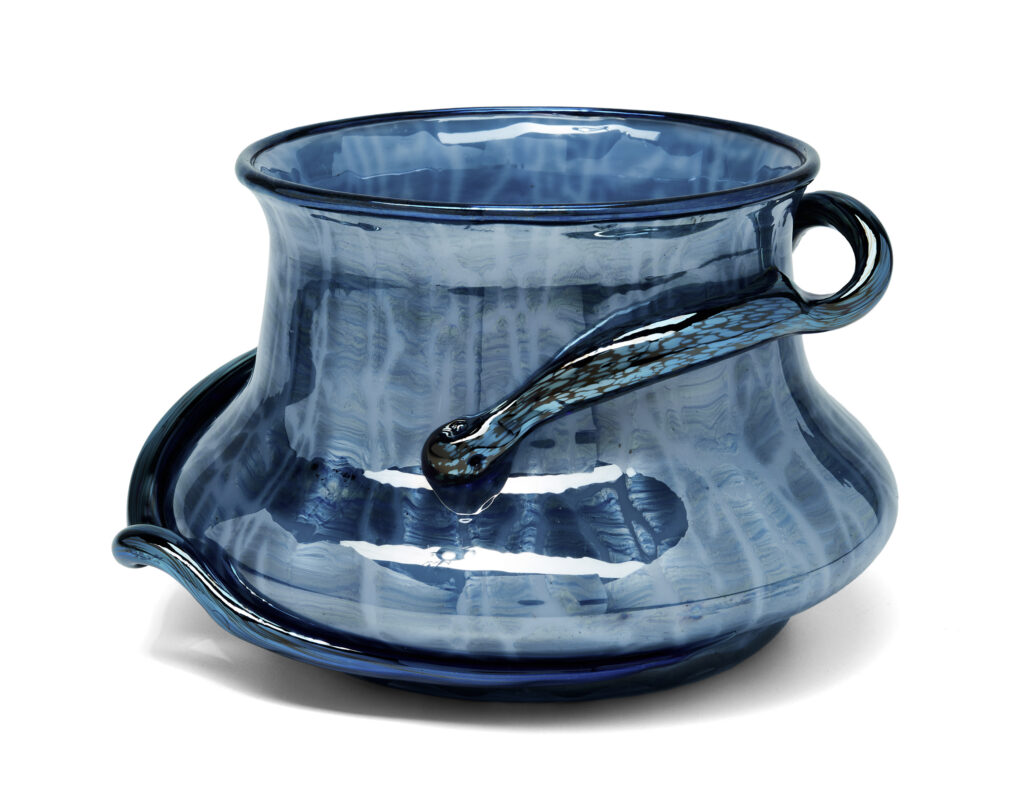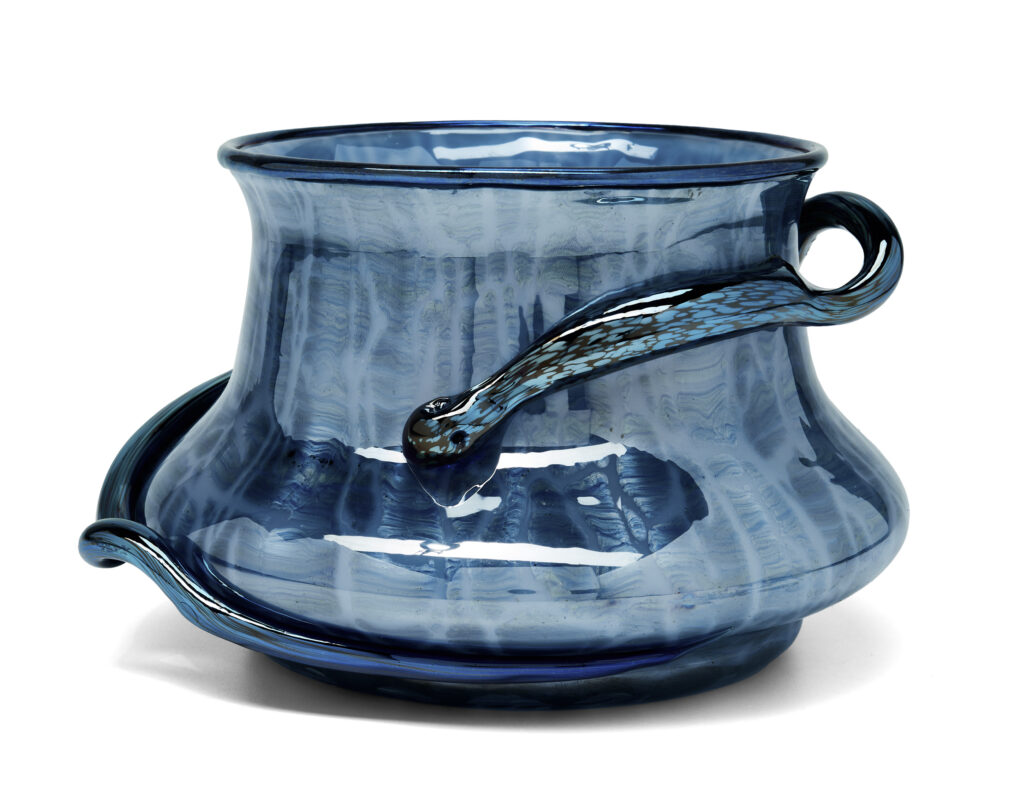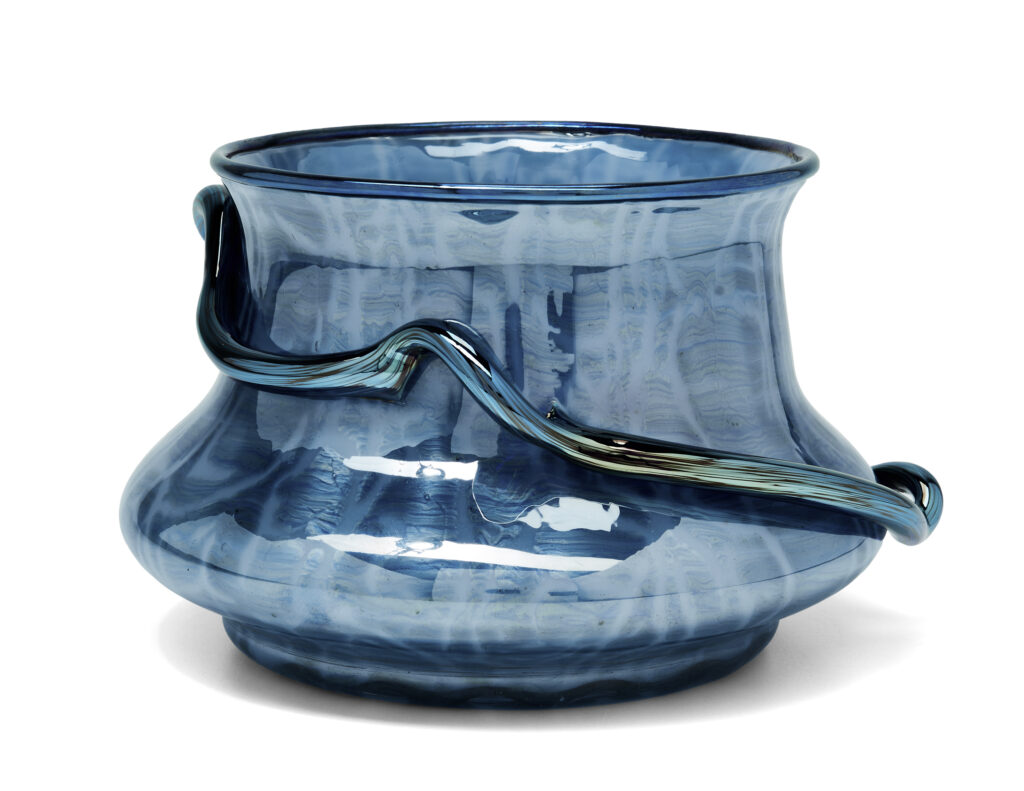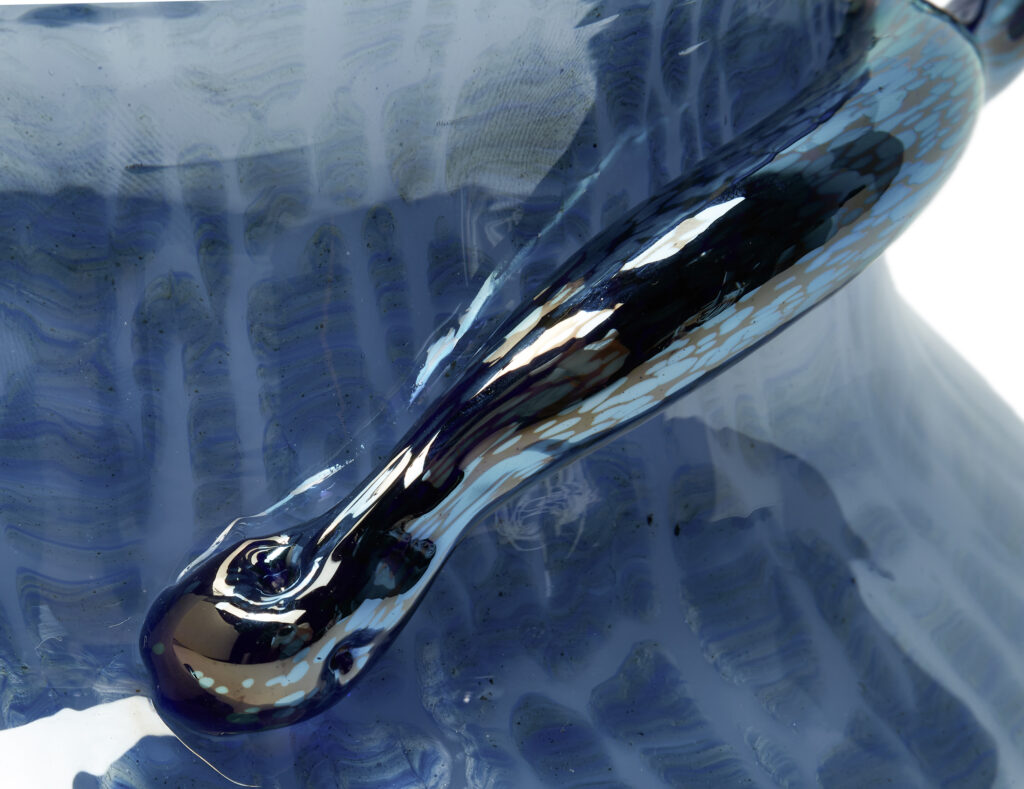Johann Loetz Witwe – Ausführung 134
This remarkable bowl was created by Johann Loetz Witwe and dates back to the early 20th century. With a generous body diameter of 21 cm (8.27 inches) and a height of 13.5 cm (5.31 inches), this is an impressive decorative object that reflects the transition from the Art Nouveau to the Art Deco era.
The bowl is crafted in Ausführung 134, a technique introduced in 1914, at the onset of the First World War. This execution is based on the Titania technique, developed in 1905 as a response to the waning interest in iridescent glass. With Titania, Loetz introduced a new aesthetic by layering metallized glass threads over a base-colored glass and finishing it with a transparent glass coating. This process created a mysterious play of colors and a unique depth effect, giving the glasswork a refined and captivating appearance.
In terms of color, the bowl features a stunning light blue base, combined with a deep blue-gray Titania layer. Unfortunately, photographs often fail to capture the true colors and nuances of the bowl, slightly understating its enchanting depth and play of colors.
A distinctive feature of this bowl is the applied snake, crafted from cobalt blue glass. The graceful snake lies elegantly across the bowl, with carefully formed details such as a hand-shaped head and applied glass eyes. Additionally, the upper rim of the bowl is accentuated with a cobalt blue glass thread, further enhancing its refined appearance.
As is customary for Loetz glass after 1902, the bowl is unsigned. After the First World War, Loetz introduced a new etched mark, “CZECHO-SLOVAKIA,” for their glassware, but this does not apply to this piece.
This bowl combines artistic innovation and historical significance, making it a valuable object for both Art Nouveau enthusiasts and Loetz glass collectors.









